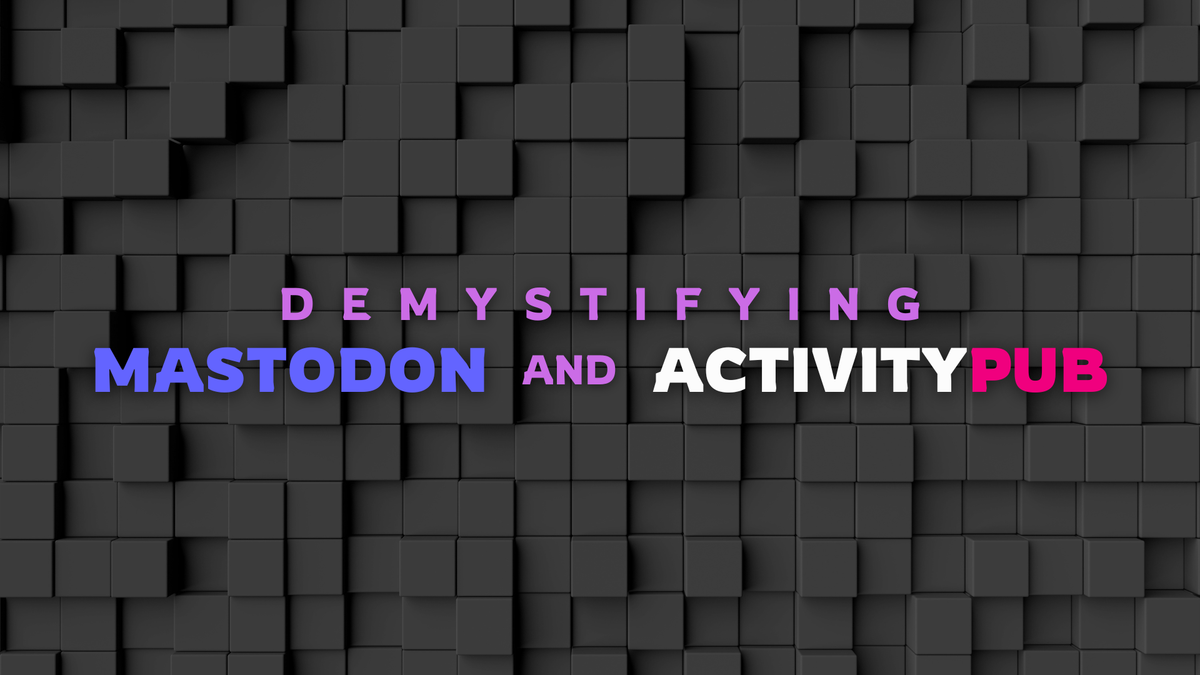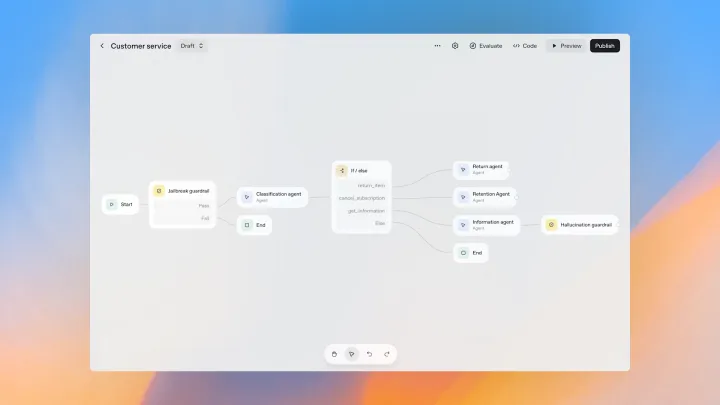Demystifying Mastodon and ActivityPub: An In-Depth Guide for Everyone

Introduction: Why Mastodon and ActivityPub Matter
Imagine if you could choose where your social media lived—maybe on your friend’s server, a public community, or your own home computer—yet still chat, share, and stay connected to everyone everywhere on the network. Now imagine this freedom isn’t controlled by a single company or government, but by a common set of open rules anyone can use. If you’re looking for a healthier, more open alternative to mainstream social media, or if you’re a curious technologist eager to explore decentralized architectures, you’re in the right place.
This article explains Mastodon—the people-centric, Twitter-like social platform that soared after recent controversies in big-tech social media—and ActivityPub, the open protocol that makes Mastodon (and much of the so-called Fediverse) possible. Whether you’re a non-technical reader wondering “What is all this about federated social media?” or a developer itching to roll your own ActivityPub-compatible server, you’ll find practical analogies, deep technical explanation, real-world examples, step-by-step setup guidance, and strategic insider insight here.
What Is Mastodon? A Friendly Overview
Mastodon is a free, open-source social networking platform that closely resembles Twitter (now X) in its user interface and microblogging features, but with a radical difference at its core: decentralization. Instead of everyone logging into one giant website owned by a corporation, Mastodon consists of thousands of independently operated servers, or “instances,” that are interconnected.
Each Mastodon user signs up on a particular server—maybe a global one like mastodon.social, a local city-focused server, a professional interest group, or even their own self-hosted server—but can follow, interact with, and message people across all other Mastodon servers and many other compatible services. This inter-server communication is powered by ActivityPub, a protocol we’ll unpack in detail soon.
Mastodon’s key features:
- Chronological, ad-free timeline: Posts (historically called “toots”) appear in the order they’re made, not in algorithmic ranking.
- Granular privacy controls: Users decide which posts are public, unlisted, follower-only, or direct messages. Content warnings (CWs) let you hide post content behind a custom label.
- Community-driven moderation: Each instance sets its own rules and governance—this contrasts with the one-size-fits-all moderation of centralized networks.
- No “walled garden”: You can move your account between servers, take your social connections with you (within current technical limits), and interact with people on other ActivityPub-powered platforms such as Pixelfed (image sharing), PeerTube (video hosting), Lemmy (Reddit-style forums), Ghost (blogging), and more.
- Open source: Anyone can review or modify the core Mastodon code, which is written in Ruby on Rails for the backend and React for the frontend.
Mastodon, first released in 2016 by Eugen Rochko, exploded in popularity during several social media crises, most notably after Twitter’s 2022 ownership upheaval. By September 2025, Mastodon hosts well over 7 million registered users, supporting dozens of languages and hosting vibrant discussions by artists, technologists, activists, scientists, governments, and regular folks alike.
The Fediverse: Social Media as a Network of Communities
To understand Mastodon, it’s essential to grasp the larger concept of the Fediverse (“federation” + “universe”).
Analogy: The Fediverse is like email. When you get an email address, you might choose Gmail, Outlook, your work server, or even run your own mail server at home. Yet you can send and receive emails to and from anyone, regardless of their email provider. Fediverse platforms work the same way but for social networking: your profile and posts live on one “instance,” but federation connects you to everyone on other instances and even entirely different platforms, if they speak the same “social language” (i.e., ActivityPub).
Key properties of the Fediverse:
- Decentralized control: No single owner, operator, or “down switch.” Each server can set its own rules, moderate users as they see fit, and connect or disconnect (“defederate”) from any other server.
- Diverse communities: From science and tech to gaming, activism, regional cultures, and marginalized groups—hundreds of communities thrive, each with their own flavor and focus.
- Interoperability: Mastodon is just one of many platforms using the ActivityPub protocol. Others include Pixelfed (think Instagram), PeerTube (think YouTube), Lemmy and Kbin (Reddit alternatives), BookWyrm (Goodreads alternative), and more.
Why does this matter? The Fediverse—and thus Mastodon—lets you “pick your home base,” join communities run by people who share your values, and still access the global conversation without being locked into a single company’s ecosystem.
ActivityPub: The “Underpass” That Connects the Fediverse
If Mastodon and its Fediverse friends are neighboring office buildings, ActivityPub is the underpass that lets people walk between buildings, share messages, and hang out, regardless of which building they live in.
In technical terms: ActivityPub is a decentralized social networking protocol standardized by the W3C (the web’s standards organization) in 2018. It’s what lets different servers and even different platforms understand each other’s “social media speak.”
What Does ActivityPub Do?
- It defines what a “user” is (called an Actor), how users represent themselves, and what kind of social actions they can do (like, follow, post, comment, etc.).
- It provides a server-to-server (“federation”) protocol so event notifications (posting, following, liking) can be sent between different instances.
- It provides a client-to-server protocol to create or modify content (posting, deleting, reacting, etc.) from an app or website to the user’s “home” server.
Fancy Words, Everyday Actions: The ActivityPub Data Model
- Actor: Someone or something that can send/receive activities—usually a human, bot, group, or service.
- Object: What the activity acts upon, such as a post (“Note”), image, event, or even another Actor.
- Activity: The action, such as “Create” (posted new Note), “Like” (liked an Object), “Follow” (followed someone), or “Announce” (boosted/reshared a post).
- Inbox/Outbox: Every Actor has an inbox (where they receive activities) and an outbox (where they send activities out).
To illustrate: When you “like” a photo posted by a Pixelfed user, your Mastodon server sends a Like activity to Pixelfed’s server, showing that you liked that photo. The receiving server updates the local display—showing your like—even if you’re not using Pixelfed! This is true interoperability in action.
Mastodon vs. ActivityPub: What’s the Difference?
Let’s make one thing very clear:
- Mastodon is software—a platform for microblogging.
- ActivityPub is a protocol—the set of rules and formats that Mastodon (and other platforms) use to exchange social activities.
Analogy: Think of Mastodon as a particular car model, while ActivityPub is the common road system. Other cars (Pixelfed, PeerTube, Lemmy…) can use the same roads as long as they follow the same traffic rules (the protocol). So, Mastodon relies on ActivityPub to travel the “social highway” of the Fediverse, but it’s just one kind of “vehicle” on the road.
The Relationship Between Mastodon and ActivityPub
Mastodon is the most popular platform that uses ActivityPub, but it is not the only one. Its adoption of ActivityPub over older protocols (like OStatus) in 2017 established it as the engine for today’s federated social web.
- Mastodon implements ActivityPub for both server-to-server and client-to-server communication.
- Every Mastodon instance is an ActivityPub server: When you sign up at mastodon.social, your account becomes an "Actor" with an inbox and outbox, and every social interaction uses ActivityPub messages.
- Interoperability: Mastodon can follow, interact with, and be followed by users from other ActivityPub platforms—making it possible, for example, for a PeerTube user to follow a Mastodon account, or a Mastodon user to like a Pixelfed photo.
Technical Dive: Mastodon’s Architecture at a Glance
For the technically curious, Mastodon’s multi-component architecture is both robust and familiar compared to modern web applications:
- Backend: Ruby on Rails application orchestrates business logic—user accounts, posts, timelines, and API endpoints.
- Streaming Server: A Node.js app handles real-time updates using WebSockets so users can see new posts and notifications instantly.
- Databases: PostgreSQL for persistent data; Redis for fast caching, job queueing (via Sidekiq), and session management.
- Frontend: React and Redux power the dynamic web interface.
- Media Storage: File uploads can be handled locally or by third-party object storage (e.g., AWS S3).
- Optional: Elasticsearch for full-text search; SMTP/email provider for registration and notifications.
- Federation logic: ActivityPub integration lives in both the main app and auxiliary services—handling incoming and outgoing HTTP requests, cryptographically signing messages, processing webhooks, etc.
Here’s a high-level sequence:
- User posts a status: It is stored in PostgreSQL, and pushed to their followers’ feeds (local users via Redis, remote ones via outgoing ActivityPub messages).
- Sidekiq (background jobs): Handles distributing posts to external servers, processing media, sending notifications, etc.
- Receiving ActivityPub events: Incoming HTTP POSTs to
/inboxfrom other instances/systems update local timelines/databases as needed.
Scaling: Mastodon scales horizontally. For large instances like mastodon.social, you may see multiple web app servers, distinct Sidekiq worker clusters, Redis clusters (separating cache from persistent queue data), and even database replicas for read scaling. Media can be offloaded to S3. This blueprint can be adapted by anyone deploying a Mastodon instance.
ActivityPub in Action: How Federation Really Works
Let’s demystify how ActivityPub actually enables distributed social networking:
- User Discovery (WebFinger): To follow
@alice@example.com, Mastodon uses WebFinger—a discovery protocol—to resolve Alice’s “real” profile URL and find her inbox/outbox. This step is analogous to how email finds the right destination server. - Interactions: When you post, reply, like, or boost, your Mastodon instance generates an Activity describing your action and sends it (often via POST) to the target instance’s inbox endpoint.
- Inbox/Outbox Workflow: Servers receive activities in the inbox and process them, possibly updating the database, local timelines, or sending notifications. Outbox is used for outgoing activities—much like outgoing postboxes in a real post office.
- Activity Streams: All shared data takes the form of ActivityStreams 2.0 JSON-LD—meaning both humans and machines can interpret the message.
- Authentication: All ActivityPub activities are cryptographically signed for security and authenticity, using each Actor’s published public key.
- Shared Inbox Optimization: To avoid overwhelming remote servers with many one-off requests, ActivityPub supports a shared inbox endpoint per server, letting servers “fan out” posts efficiently to many users.
Example: If @bob@server1.social posts a message, server1.social sends a Create activity to the inboxes (or shared inbox) of every server where a follower of Bob resides. Each receiving server validates the signature, stores the message, shows it to interested followers, and may propagate it further via boosts, likes, etc..
Understanding the Fediverse Model
The Fediverse is defined by two big concepts: federation and interoperability.
- Federation: Servers (instances) are independent but connect via ActivityPub. There is no center, but rather a network of “peers.”
- Moderation: Each instance enforces its own code of conduct, bans, and defederation choices. There’s no global “terms of service”—users must pick the community that aligns with their preferences.
Federation in Practice: Just as organizations may “blacklist” abusive email senders, Mastodon instance admins can block (defederate from) instances whose content or behavior conflict with their own rules. This flexible approach leads to a diversity of norms and cultures across the network.
Comparative Table: Mastodon vs. ActivityPub
Below is a breakdown of how the two compare along core dimensions:
| Dimension | Mastodon | ActivityPub |
|---|---|---|
| Purpose | Social microblogging platform | Decentralized social networking protocol |
| Nature | Application/software | Protocol/standard (W3C Recommendation) |
| Architecture | Federated instances (servers); Rails/React stack | JSON-LD, HTTP-based protocol (server-to-server, client-to-server) |
| Federation | Built-in via ActivityPub; instance-based | Enables federation, not restricted to any app |
| Use Cases | Twitter-like posting, following, boosting, content warnings | Enables blogging, image/video sharing, news aggregation, event planning, more |
| Moderation | Instance-level policies, block/defederate | Not enforced by protocol; up to each server |
| Interoperability | Works with ActivityPub-compliant platforms | Underpins all Fediverse platforms |
| Licensing | AGPLv3+ (open source) | W3C open standard |
| Scalability | Scales with instance resources; can be self-hosted or massive | Designed for unlimited federation; scale depends on implementations |
| Extensibility | Plugins, themes, API extensions | Extensible data model (ActivityStreams 2.0, JSON-LD) |
| User migration | Structure for moving accounts between instances, with caveats | Protocol doesn’t natively cover migration across all data types |
| Example Projects | Mastodon, Truth Social, mozilla.social, chaos.social | Mastodon, Pixelfed, PeerTube, Lemmy, BookWyrm, Misskey, Pleroma, kbin, Threads, WordPress, Ghost, NodeBB, Firefish, Discourse, more |
This comparison illustrates that Mastodon is an ActivityPub platform, while ActivityPub is the protocol layer beneath it. As a result, Mastodon is always an ActivityPub actor—but ActivityPub is not limited to microblogging or even social networks.
Setting Up Your Own Mastodon Instance: The User Guide
Want to run your own social network, just for yourself, your community, or your business? Here’s how you get started with Mastodon:
Why Would You Host Your Own Server?
- Absolute control over rules, moderation, and branding.
- Freedom from corporate social policies, algorithms, and advertising.
- Your “home base” is independent and portable—if one provider fails, your content and users can move elsewhere.
- Power to integrate unique features or connect with other business, educational, or community needs.
Basic Requirements
- Domain name: For your instance’s identity and accessibility.
- A server: Could be a Virtual Private Server (VPS), a self-hosted machine, or cloud instance (DigitalOcean, AWS, Hetzner, etc.).
- Email delivery: Via a third-party provider (Mailgun, Postmark) for confirmations, password resets, etc.
- (Optional) Object storage: AWS S3 or compatible for file storage, especially for scaling or heavy media posting.
Typical Hardware Needs
- For a small to moderate server: at least 2-4 CPU cores, 4-8GB RAM, 25-100GB SSD (more for larger instances), and solid network connection.
Software Stack
- Ubuntu 22.04 or Debian 11 recommended.
- Ruby, Node.js, PostgreSQL, Redis, nginx (or Apache as reverse proxy), Sidekiq (background jobs), email (Postfix, or third-party SMTP).
Installation Steps (Simplified)
- Prepare your VPS: Set up operating system, secure it, install core dependencies (Ruby, Node, PostgreSQL, Redis).
- Download Mastodon: Clone the official repository. Use the setup wizard or follow the install docs.
- Configure environment: Set up environment variables for database, Redis, domain, email provider, etc.
- Database setup: Initialize and migrate the PostgreSQL database.
- Install Mastodon: Run the setup script and answer prompts for instance configuration, admin user creation, etc.
- Set up reverse proxy: Configure nginx (or similar) for HTTPS/TLS and proxying to Rails/Node.js process.
- Start services: Enable and start Mastodon’s web, streaming, and Sidekiq services.
- Test and customize: Visit your domain in the browser, complete admin setup, invite users, tweak instance rules.
Managed Hosting: If this is too technical, services like Masto.host, Hostdon, or FediHost provide turnkey Mastodon instance hosting for a monthly fee, handling maintenance, backups, and upgrades.
Scaling: Mastodon supports splitting components onto multiple servers as your instance grows—app servers, background workers, caching, storage, etc..
Building a Custom ActivityPub-Compatible Service
If you’re a developer inspired to join the Fediverse, you don’t have to limit yourself to Mastodon or microblogging. Here’s how to approach creating your own ActivityPub-compatible application:
1. Understand ActivityPub’s Core Concepts
- Use the “Actor” model. Every user (or entity like a group, bot, or service) has an Actor resource (with inbox, outbox, profile, preferences, etc.).
- Define activity types. Use ActivityStreams vocabulary to represent follows, likes, comments, etc. (extend with your own as needed).
- JSON-LD Endpoint Design: Every actor and object must be available at a stable, dereferenceable URL, answering with machine-readable ActivityStreams JSON-LD.
2. Core Endpoints To Implement
- .well-known/webfinger: For username discovery.
- /users/:username (Actor document): For profile info.
- /users/:username/inbox: Where you receive remote activities (POST endpoint).
- /users/:username/outbox: Where clients get a user’s activities (GET endpoint).
- /users/:username/followers / following: For management of relationships.
- Other endpoints as needed: Media hosting, collections, extended content.
3. Security
- HTTP Signatures: All outgoing ActivityPub messages must be cryptographically signed; all incoming must be validated.
- Public keys: Exposed in the Actor document.
4. Validation and Testing
- Use community resources, like SocialHub, delightful-fediverse-apps, and the ActivityPub Test Suite.
- The best reference is the W3C ActivityPub specification and ActivityStreams vocab documentation.
Example Projects That Use ActivityPub
| Platform | Type/Use Case | Approx Users | Description / Elevator Pitch |
|---|---|---|---|
| Mastodon | Microblogging/social | 7.9 million | Twitter-style decentralized social media |
| Pixelfed | Image sharing | 800k+ | Instagram-like experience |
| PeerTube | Video hosting | 400k+ | Decentralized YouTube alternative |
| Lemmy | Social news/forum | 480k+ | Reddit-like link aggregator and forum |
| BookWyrm | Book cataloging | 50k+ | Goodreads-like network for books |
| Plume | Blogging | 24k+ | Decentralized blogging |
| Misskey | Blogging, microblog | 1M+ | Customizable microblog platform |
| Pleroma | Microblogging | 50k+ | Lightweight Mastodon alternative |
| Mobilizon | Event management | 77k+ | Decentralized event organizing |
| NodeBB | Forum software | 2.7 million | Modern forum, federated |
| Ghost | Blogging (beta) | - | Powerful open-source blogging/newsletters |
| Threads | Blogging, microblog | 130M+ | Meta’s Twitter competitor (Fediverse beta) |
A much more extensive (and regularly updated) list is maintained by the SocialHub and delightful-fediverse-apps projects .
User-Friendly Explanations and Analogies
1. Email Analogy:
Mastodon/ActivityPub is to social media what email is to communication. Pick your provider, be it Gmail, work, or self-hosted, but you can talk to anyone, anywhere, on any provider. Fediverse platforms—whether for posts, photos, video, etc.—work the same way. The servers use ActivityPub as their “SMTP for social media”.
2. Apartment Building Analogy:
Each Mastodon server is like an apartment building, managed by a particular landlord (the sysadmin). You may live in one community, but you can still visit friends—knock on doors, leave notes, attend parties—across all the other buildings in town, as long as the building supports the same “rules” (ActivityPub).
3. Protocol as “Traffic Laws”:
ActivityPub is the set of traffic laws every social network obeys, ensuring cars (posts, likes, follows) can hop from server to server safely, no matter what brand the car is.
4. “Underpass” or “Bridge” Metaphor:
If each platform (photo, microblog, video) is its own building, ActivityPub is the secure bridge or underpass connecting them—making for a single, global, yet non-centralized, social landscape. You can pop out of your building, cross the bridge, and have coffee with neighbors from other buildings, with no passport needed.
Employing useful analogies makes even the deepest technical subject less intimidating—imagine your social graph as a web of post offices, each speaking the same “mail carrier language,” with trusted couriers delivering and authenticating messages all day long.
Frequently Asked Questions
Q: Can I move my Mastodon account to another server?
A: Yes, Mastodon supports account migration, letting you move your profile and followers (but not posts or DMs) to a new instance. The actual migration depends on both Mastodon and ActivityPub features—currently, follower migration is supported via the Move activity, but complete portability is a work in progress.
Q: If I run my own instance, can anyone join it?
A: Up to you! You can make it private, invite-only, or open to the world. Managing a large open instance means dealing with moderation, legal responsibilities, and technical scaling, but running a “family and friends” server is very manageable.
Q: Is Mastodon secure and private?
A: Mastodon supports HTTPS, strong cryptographic signatures for federation, and per-instance privacy rules. Each server admin can see a user’s private data on their server, so trusting your server’s admin is important. Account privacy features—like locked accounts, unlisted posts, and direct messages—help users control their audience.
Q: Why do I see some posts with missing likes or replies?
A: Due to distributed caching and federation delays, counts may not always be synchronized between all servers at once. Only the originating instance is guaranteed to have the full picture; remote instances see likes or replies reported to them directly, but may miss others until refreshed or fetched explicitly.
Q: Can Mastodon “block” or “defederate” from abusive servers?
A: Yes. Every Mastodon instance can block content, posts, or even all communication with any other server—a much more community-centric tool than what’s allowed on corporate platforms.
Looking Forward: The Future of ActivityPub and the Fediverse
The story isn’t standing still. The success of ActivityPub and Mastodon has big social networks (Meta’s Threads, Flipboard, and Tumblr) pledging to integrate with ActivityPub, with Meta’s Threads now running a beta in public. As more platforms adopt the protocol, the Fediverse’s open, decentralized social web model is poised to challenge the historic dominance of corporate networks.
Key implications:
- Interoperability is the new norm: Different social apps—text, video, images, and more—can form one social web.
- Open standards and healthy competition: Anyone can improve, fork, or create new clients and servers, breaking central gatekeepers’ power.
- Cultural diversity and moderation autonomy: Each community can maintain its own values, blocking or curating connections as they wish.
- Challenges remain: Better tools for account portability, moderation at scale, privacy, and UX will emerge as the ecosystem evolves.
In summary: Mastodon and ActivityPub combine the best of both worlds: the freedom, openness, and diversity of the early web, updated for today’s ever-social digital culture. Whether you’re a casual user, a social organizer, or a developer with a vision for the next big thing, the Fediverse is open for you.
Final Takeaways
- Mastodon is a decentralized Twitter-like platform, the Fediverse’s poster child, built on open source and user freedom.
- ActivityPub is the protocol—the shared language—that connects Mastodon to thousands of other servers and platforms (the Fediverse).
- Federation empowers community ownership, independence, and interoperability, transforming “social media” from a single siloed site into a true global commons.
- Starting your own Mastodon instance or ActivityPub-compatible service is within the reach of any technologist, and powering new, creative, niche, or large-scale communities alike.
If you’re excited to try for yourself, join an instance at joinmastodon.org, read up on ActivityPub at activitypub.rocks, or get inspired by the next generation of open, interlinked social platforms across the web.
This guide was prepared using a wide range of reputable technical, journalistic, and community resources current as of September 2025, and synthesizes experiences from users, developers, open standards bodies, and real running platforms.



Comments ()